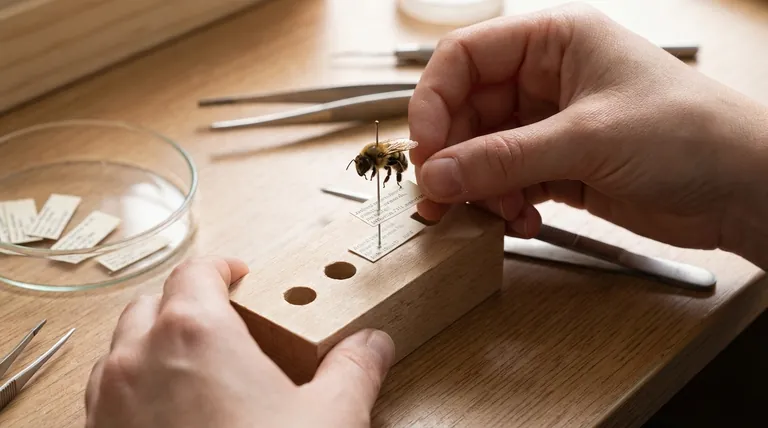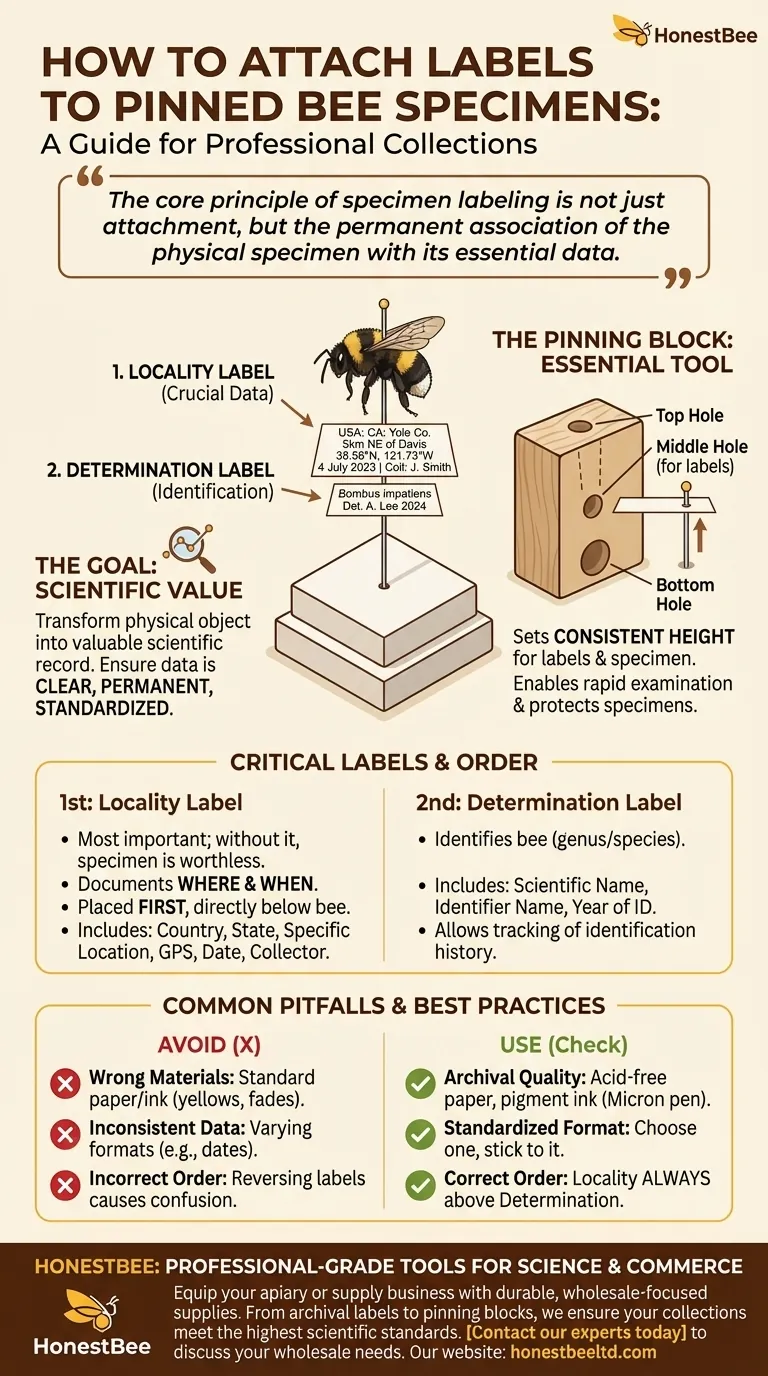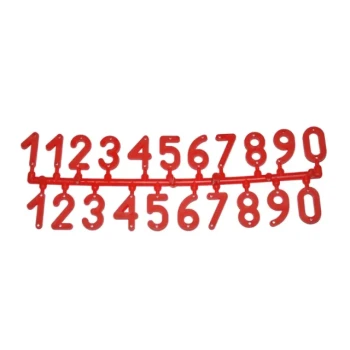To attach labels to a pinned bee specimen, you slide small, rectangular paper labels directly onto the pin beneath the bee. This is done after the specimen is completely dry. A specialized tool called a pinning block has holes of varying depths, and its middle hole is typically used to push the labels up the pin to a uniform and correct height, ensuring consistency across a collection.
The core principle of specimen labeling is not just attachment, but the permanent association of the physical specimen with its essential data. A specimen without its locality data is scientifically worthless, making proper, standardized labeling the most critical step after collection.

The Goal of Scientific Labeling
A pinned insect is a physical data point. The labels transform it from a simple object into a valuable scientific record. The goal is to ensure this data is clear, permanent, and standardized.
The Critical First Label: Locality
The most important label is the locality label. It documents the where and when of the collection event. Without this information, the specimen has no context and loses almost all of its scientific value.
This label is always placed on the pin first, directly below the specimen. It should contain the country, state or province, specific location (e.g., "5km NE of Anytown"), GPS coordinates if available, the date of collection, and the collector's name.
The Second Label: Determination
Below the locality label, you may add a determination label. This label identifies the bee, typically to the genus and species level.
It includes the scientific name (e.g., Bombus impatiens) followed by the name of the person who identified it and the year of identification. This allows future researchers to track who made the identification and when.
The Role of the Pinning Block
A pinning block is a simple but essential tool for creating a professional and organized collection. It is typically a small block of wood or plastic with three holes drilled to different depths.
Ensuring Uniform Height
The primary function of the block is to set a consistent height for both the specimen on the pin and the labels below it. By placing the head of the pin into the middle hole and sliding the label up until it touches the block, every label in your collection will be at the same height.
Why Consistency Matters
This uniformity is not just for aesthetics. It allows for the rapid and easy examination of labels in a collection drawer without handling each pin individually. It also protects the delicate specimens by creating standardized spacing, preventing them from tangling with labels or other pins.
Common Labeling Pitfalls to Avoid
The value of a specimen can be compromised by simple mistakes during the labeling process. Proper technique ensures the data lasts for centuries.
Using the Wrong Materials
Never use standard office paper or ink from a typical ballpoint or inkjet printer. Over time, this paper will yellow and degrade, and the ink will fade, especially when exposed to light or pests. Always use archival-quality, acid-free paper and permanent, pigment-based ink (like a Pigma Micron pen).
Inconsistent or Illegible Information
Handwriting must be as small and legible as possible. If printing labels, use a very small, clear font. Inconsistent data formats (e.g., writing "July 4, 2023" on one label and "10/IV/2023" on another) make data management difficult. Pick a format and stick to it.
Incorrect Label Order
The order of labels is a universally recognized standard. The locality label always goes above the determination label. Reversing this order can cause confusion for other entomologists examining your specimens.
How to Apply This to Your Project
Your approach to labeling should match the long-term goal for your specimens.
- If your primary focus is creating a permanent scientific record: Use archival paper and pigment ink, include comprehensive locality data, and use a pinning block to ensure every label is at a consistent height.
- If your primary focus is a personal or decorative collection: While archival materials are still recommended, the absolute consistency of label height may be less critical, though it remains a hallmark of a well-curated collection.
- If you are preparing specimens for an institutional collection: You must adhere strictly to their specific standards, which will always include archival materials, standardized data formats, and uniform label placement.
Properly labeling your specimen is the final act of scientific care, ensuring your effort contributes lasting value.
Summary Table:
| Label Type | Purpose | Key Information | Placement Order |
|---|---|---|---|
| Locality Label | Documents collection event | Country, state, specific location, date, collector | First label on the pin |
| Determination Label | Identifies the specimen | Scientific name, identifier, year of ID | Second label on the pin |
Equip your apiary or supply business with professional-grade tools. Proper specimen preparation is crucial for research and conservation. HONESTBEE supplies commercial apiaries and beekeeping equipment distributors with the durable, wholesale-focused supplies needed for meticulous work—from archival labels to pinning blocks. Contact our experts today to discuss your wholesale needs and ensure your collections meet the highest scientific standards.
Visual Guide

Related Products
- Professional Galvanized Hive Strap with Secure Locking Buckle for Beekeeping
- Plastic Beekeeping Honey Bee Larvae Grafting Tools for Queen Rearing and Chinese Grafting
- HONESTBEE Anatomy Bee Model Detailed Anatomical Display for Education and Study
- Durable Plastic Hive Number Set for Beekeeping
- Wooden Queen Bee Excluder for Beekeeping
People Also Ask
- What are the two styles of hive straps? Choose the Right Strap for Your Hive Security
- Can straps with hook ends be used for beehives? A Guide to Secure Hive Management
- What are the types of Emlocks available? Choose the Right Strap for Hive Security
- What is the advantage of using cam buckle straps? Secure Your Load Fast with Simple, Safe Tensioning
- How can beekeepers secure the top cover of a hive? Protect Your Colony from Wind and Weather



















